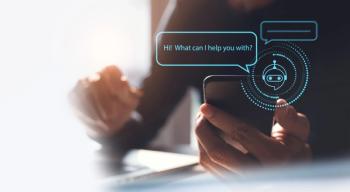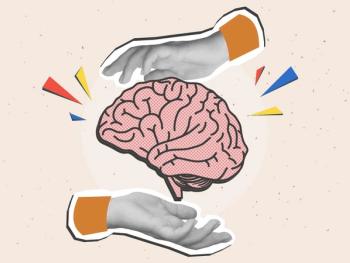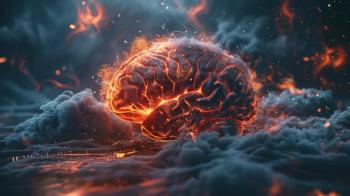
Psychotherapy as a Medical Treatment
Why did medicine and psychotherapy part ways? How can they be brought back together?
COMMENTARY
With Sigmund Freud’s development of modern psychotherapy in the 1890s, a new method for treating psychopathology was born. A neurologist by training, Freud was first and foremost a medical doctor who, in 1895, wrote that with psychoanalysis he wished to create “a psychology that would be a natural science.”1 Throughout his career, Freud maintained his belief that future advances in neuroscience would validate his ideas on the unconscious, and that later modifications to psychoanalytic technique could render it effective for more severe mental diseases like schizophrenia.
Yet, in the past 50 years, and especially the past 30, we have witnessed the concept of
The American Psychological Association’s
“…any psychological service provided by a trained professional that primarily uses forms of communication and interaction to assess, diagnose, and treat dysfunctional [disordered] emotional reactions, ways of thinking, and behavior patterns.”
Yet, among some modern psychoanalysts and existential therapists, there is a tendency to see psychotherapy as a process wholly unrelated to the concept of mental illness (ie, not as a form of treatment for illness, but rather as an endeavor undertaken for other reasons), a position that deviates significantly from the psychiatric and psychoanalytic conceptualization of psychotherapy for the vast majority of the 20th century.
While this demedicalization of psychotherapy coincides chronologically with the growth in lay analysis (ie, the practice of psychotherapy by nonphysicians), I contend that it is not solely due to this factor. Psychiatric social workers were the first nonphysicians to practice psychotherapy beginning in the early 20th century, engaging in this practice well before it was adopted by the fields of psychology and counseling, but psychotherapy remained chiefly focused on the treatment of the mentally ill during this period.3 Rebranding psychotherapy as a nonmedical endeavor unrelated to
The Consequences of Demedicalization for Patients
I contend that there are 3 main consequences to demedicalizing psychotherapy:
1. Psychotherapy becomes devalued relative to other forms of psychiatric treatment, despite its proven effectiveness for a range of mental disorders.
2. Access to psychotherapy as a treatment for mental disorders becomes more difficult, as fewer therapists choose to specialize in treating psychiatric patients and instead become focused on other forms of therapy or counseling.
3. Training requirements for psychotherapists continue to loosen, so that many graduating therapists have had little to no exposure to patients across the psychiatric diagnostic spectrum.
While all 3 points are vital, I wish to comment briefly on number 3, which I see as particularly worrisome. Training standards for psychotherapists in this country have been falling for decades. For instance, some clinicians finish graduate school without ever having assessed a patient with schizophrenia or
These factors have led to a shortage of properly trained psychotherapists nationwide. In my own metropolitan area of over 3 million individuals, there are only a handful of therapists in private settings who work with patients with severe mental disorders, such as
In saying that psychotherapy is primarily a form of medical treatment, I am not suggesting that its practice once again be limited to physicians. In a broad sense, a whole host of medical interventions are provided by nonphysicians, such as nurses and physician assistants, and I contend that psychotherapy is one of those interventions. As noted above, psychiatric social workers practiced psychotherapy within departments of psychiatry starting in the 1910s. During this time, psychotherapy remained a medical treatment for psychiatric disorders.
Likewise, I do not contend that these nonmedical extensions of psychotherapy, such as helping businesspeople climb the corporate ladder, are not legitimate activities that serve a useful purpose. It is simply to say that these other enterprises, as worthy (and lucrative) as they may be, distract us from psychotherapy’s main goal: the alleviation of the human suffering caused by mental illness. What we are left with is a psychotherapy that works for the rich and healthy, not the sick and disabled.
The Consequences of Demedicalization for the Field of Psychotherapy
Not only is demedicalizing psychotherapy bad for psychiatric patients, it is also bad for psychotherapy itself. When psychotherapy is seen by the general public—and by some mental health professionals—as something other than treatment (eg, as mere conversation to deal with day-to-day life struggles), it becomes an intervention of secondary or tertiary importance in the psychiatric armamentarium. If psychotherapy is seen as not really treating mental disorders (“Medications treat the illness, psychotherapy just helps people cope”), then its use will gradually fall out of fashion in favor of other, usually biological, treatments. Yet we know that psychotherapy is the treatment of choice for a range of mental disorders, including personality disorders, posttraumatic stress disorder, mild depressive disorder, and others.4
Even in instances where psychotherapy is not indicated as monotherapy, such as in the treatment of bipolar disorder or schizophrenia, its use is not merely supportive in nature and it still reflects a form of treatment. When conceptualized through a biopsychosocial lens, even complex diseases like schizophrenia possess a psychosocial component, and psychotherapy can legitimately be seen as
While much of the demedicalization of psychotherapy has been the result of harmless motives, there is also an antipsychiatry push to conceive of psychotherapy as something other than treatment. This line of argument goes something like: “Mental illness does not exist and thus psychotherapy does not treat illness.” Szasz made such an assertion in his 1978 book
Lastly, conceptualizing psychotherapy as a medical treatment does not necessitate or imply a theory of biological causation of psychiatric disorders. The psychoanalysts of mid-century American psychiatry certainly viewed psychotherapy as treatment in the literal sense, but few saw psychiatric disorders as biological diseases. While a thorough discussion of the meaning of “disorder” in psychiatry is well beyond the scope of this paper, it suffices to say that one can conceptualize mental disorders as bona fide medical diseases due to their associated suffering and incapacity, regardless of any known or imputed biological abnormality.7
Concluding Thoughts
Freud’s original aim for psychoanalysis was as a method for treating mental illness. Psychotherapy remained, for many decades, primarily a form of medical treatment, even when practiced by nonphysicians. Attempts to define analysis—and, by extension, psychotherapy—in other ways deviate historically from its original and primary intention. The more recent application of psychotherapy to problems unrelated to psychopathology dilutes the value of psychotherapy, loosens training requirements, and leads unnecessarily to barriers to care.
Dr Ruffalo is Instructor of Psychiatry at the University of Central Florida College of Medicine in Orlando, FL, and Adjunct Instructor of Psychiatry at Tufts University School of Medicine in Boston, MA. He is a psychoanalytic psychotherapist in private practice.
References
1. Freud S. Project for a Scientific Psychology. Standard Edition. Hogarth; 1966:295-397.
2. American Psychological Association. Psychotherapy. APA Dictionary of Psychology. Accessed June 20, 2021.
3. Harrington A. Mind Fixers: Psychiatry’s Troubled Search for the Biology of Mental Illness. Norton; 2019.
4. Shedler J. The efficacy of psychodynamic psychotherapy. American Psychologist. 2010;65(2):98-109.
5. Ruffalo M.
6. Szasz T.
7. Pies R. On myths and countermyths: more on Szaszian fallacies. Arch Gen Psychiatry. 1979;36(2):139-44.
Newsletter
Receive trusted psychiatric news, expert analysis, and clinical insights — subscribe today to support your practice and your patients.

















